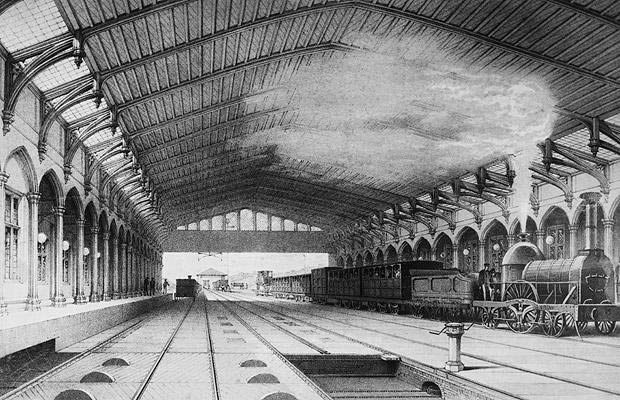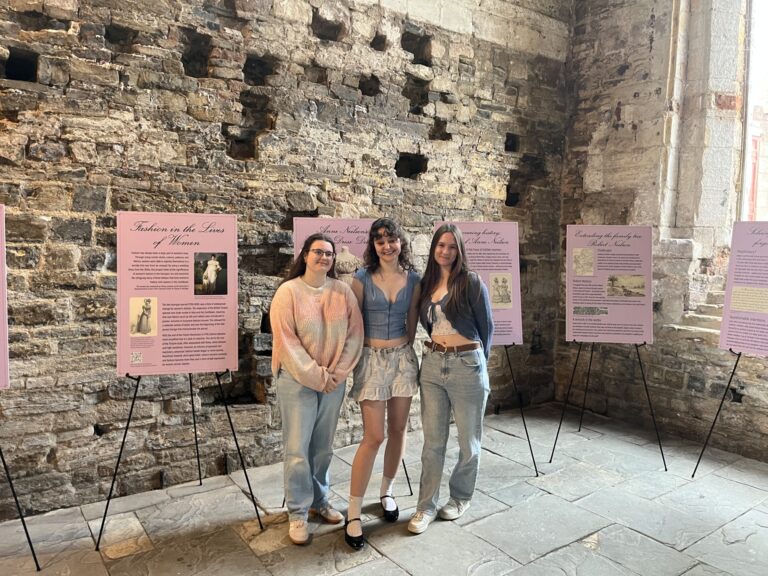| History
Iain Robertson – Train stations
Oh yes! Now here’s an exciting to pic! There’s no reason why I should choose to post this today, no anniversary; no re-opening of a historic but recently refurbished station; beyond the fact that I’ve seen quite a few of them recently! Cheltenham, for instance, a monument to 1970s desecration of a classically-inspired facade (but at least it is not Gloucester….). Stonehouse station is too short to fit the London train on; whilst the station on Rannoch Moor stands in splendid isolation in the middle of peat bog in the Highlands of Scotland. So, I’ve seen a few, then, and they got me thinking. My thought was that these are fantastic monuments to a fascinating period in our history. You can’t claim that they are wholly unsung and you certainly can’t claim that they are wholly ‘heritage from below’ but there are elements of both of this about them. The next time you stand on a platform of one of our great mainline stations – I was stood on Temple Meads in Bristol just the other day – look around you (history is as much visual as it is literary and oral) and admire the wonderful architecture! Cast iron and glass, a fantastic combination that makes for beautiful design.
pic! There’s no reason why I should choose to post this today, no anniversary; no re-opening of a historic but recently refurbished station; beyond the fact that I’ve seen quite a few of them recently! Cheltenham, for instance, a monument to 1970s desecration of a classically-inspired facade (but at least it is not Gloucester….). Stonehouse station is too short to fit the London train on; whilst the station on Rannoch Moor stands in splendid isolation in the middle of peat bog in the Highlands of Scotland. So, I’ve seen a few, then, and they got me thinking. My thought was that these are fantastic monuments to a fascinating period in our history. You can’t claim that they are wholly unsung and you certainly can’t claim that they are wholly ‘heritage from below’ but there are elements of both of this about them. The next time you stand on a platform of one of our great mainline stations – I was stood on Temple Meads in Bristol just the other day – look around you (history is as much visual as it is literary and oral) and admire the wonderful architecture! Cast iron and glass, a fantastic combination that makes for beautiful design.
I was asked as well why Temple Meads is so spacious – a temple to Victorian engineering. The answer is simple. Here is the hub of Isambard Kingdom Brunel’s Great Western Railway. And the GWR ran on broad gauge – considerably wider (and therefore smoother) than standard gauge (look it up!!!). So stations had to be more spacious to accommodate the wider tracks. Interestingly for the local historians amongst you, one of the points where the broad gauge met with the standard gauge used by the other railway companies (pre-nationalisation – when was that?) was Gloucester! And because the two sets of lines were incompatible Gloucester had two stations! Both unfortunately were lost in the rationalisation and ‘modernisation’ of the 1970s and replaced by the workaday, tired municipal architecture we now have blotting the Gloucester landscape…..
And finally, Liverpool Street station, London. I was there the other day with a group of first years discussing modernist and postmodern architecture. And we decided that here is a thoroughly postmodern piece. Yes it looks old, but it stands in the heart of the Broadgate development (1980s) and the developers wanted to knock it down. Fortunately the heritage lobby managed to prevent them. But what we got instead was something of a pastiche… A refurbishment which replaced genuine (and historic) brick columns with a concrete inner and a layer of bricks stuck on the outside to give the impression of old. Likewise completely new cafes styled to look old. And genuinely old buildings taken down brick by brick, cleaned and rebuilt brick by brick. It is a hyperrealist fantasy. A Disneyland for London’s jaded commuters….



